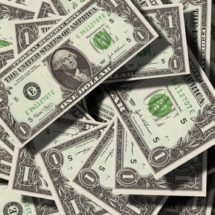Cash Out Refis Reach A Record

By Steve Matthews
Wednesday, January 2nd, 2019
Rising mortgage rates are crushing much of the refinancing market. But Americans are still using refis to pull cash out of their homes.
More than 80% of borrowers who refinanced in the third quarter chose the “cash out” option, withdrawing $14.6 billion in equity out of their homes, according to government-sponsored mortgage corporation Freddie Mac . That is the highest share of cash-out refis since 2007.
The trend attests to the current state of the U.S. economy, which is more than nine years into an expansion that has lifted home values sharply but raised worker pay at a much slower pace. Now, many are finding their homes to be a tappable source of wealth.
The increase is also a reminder of how rising mortgage rates are roiling the market. Higher rates, which make buying a home more expensive, are slowing down home sales. Rate-based refinancings, where a homeowner gets a lower rate on their mortgage, are also drying up, which has caused the higher proportion of cash-out refis. The average rate on a 30 year fixed rate mortgage is 4.55%, according to data released last week by Freddie Mac, up from 3.94% at the end of 2017.
In a cash-out refi, a homeowner essentially trades in a mortgage for a new one with a larger principal balance. The borrower can then pay off the old mortgage and still pocket a chunk of cash. Lenders say that homeowners often use the cash for home renovations or to pay down other debt.
A homeowner who uses money from a cash-out refi to pay down other, higher-rate debt could still end up paying more in the long run if they don’t use the cashflow savings from the refi to make additional principal payments in order to pay off the new mortgage faster.
The housing market in the Philadelphia area has increased significantly over the past few years and there’s a lot of equity that borrowers can tap in order to better manage their debt and make other investments. Cash-out refinancing is a one way to put those funds to work.


